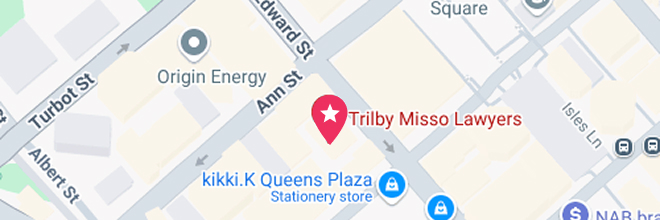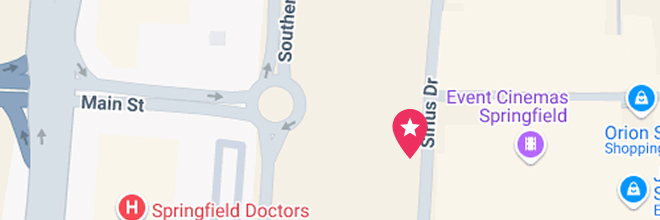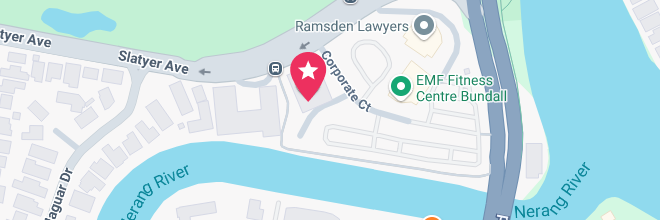Our Brisbane CBD Office
- Suite 400, Level 4/288 Edward St, Brisbane City QLD 4000
- (07) 3910 5470




In Queensland, children under 7 years of age must be secured in an age-appropriate and approved car seat, booster seat, or restraint. Infants under 6 months must be in a rear-facing car seat. These child restraint laws are set under the Queensland Road Rules and are designed to reduce the severity of injuries in a motor vehicle accident.
Failure to comply with these laws may not only lead to fines but can also impact a personal injury claim. If a child is injured and wasn’t properly restrained, this may affect the outcome of a car accident injury claim—even if another driver caused the crash.
In serious vehicle accidents involving children, law firms like Trilby Misso Lawyers regularly see cases where the type or fit of the child restraint has legal implications. Understanding the rules before a crash occurs is vital.
This guide is for parents, carers, and anyone transporting children who want to understand their legal responsibilities, avoid penalties, and protect their rights in the event of a motor vehicle accident. It also covers how personal injury lawyers Brisbane may assess claims involving children—and why using a legally compliant restraint is not just a safety issue, but a legal one too.
If you’re transporting children in Queensland, understanding car seat and booster seat laws is essential — not only for your child’s safety but also to meet legal requirements. Under the Queensland Road Rules, children must be secured in an Australian Standard AS/NZS 1754-approved restraint that’s appropriate for their age and size.
Below is a summary of the legal car seat requirements in QLD, along with best practice safety advice recommended by government and road safety experts:
Queensland Child Restraint Laws by Age
Important: It’s illegal for a child under 4 to sit in the front seat of any vehicle with more than one row. Children aged 4–7 can only sit in the front seat if all rear seats are occupied by younger children in approved restraints.
| Age Range | Legal Requirement (QLD Road Rules) | Best Practice (Safety Recommendation) |
| Under 6 months | Rear-facing car seat only | Keep rear-facing as long as child fits height markers |
| 6 months – under 4 | Rear-facing or forward-facing with inbuilt harness | Rear-facing if child still fits safely (based on height markers) |
| 4 – under 7 years | Forward-facing seat with harness OR booster with seatbelt/harness | Booster with top tether preferred for better upper body protection |
| 7 years and older | Adult seatbelt if properly fitting | Continue booster if under 145cm or seatbelt doesn’t fit correctly |
Using the right seat is just part of the law — correct installation and adjustment are also crucial.
A restraint is properly fitted if it:
Even at low speeds, an incorrectly fitted restraint can fail during a collision. That’s why professional installation is strongly advised, especially in Brisbane where free or low-cost fitting services are available.
When a child is injured in a motor vehicle accident, insurers and lawyers will often examine whether the correct restraint was used. If the child was not properly restrained, the insurer may argue contributory negligence, reducing your car accident injury claim..
In Queensland, children can legally move from a booster seat to a regular car seat with an adult seatbelt once they are 7 years old — but that doesn’t always mean it’s safe. According to safety authorities and government guidelines, the recommended minimum height for using an adult seatbelt is 145cm. Many 7-year-olds are still below this threshold and don’t fit safely in an adult belt.
Letting a child switch too soon can increase the risk of injury and potentially affect your car accident injury claim if there’s a crash.
While Queensland law allows children 7 and older to use an adult seatbelt, it’s recommended they remain in a booster seat until they are at least 145cm tall. This is based on how seatbelts are designed to sit safely across the body.
In practice, most children reach 145cm around age 11 or 12. Until then, a booster is the safest option — and aligns with best practice from road safety experts like Kidsafe QLD and Queensland Transport.
Parents often ask: “Is my child tall enough to stop using a booster seat in QLD?” The five-step test helps you decide.
A child is ready for a seatbelt when all five of these are true:
If the answer is “no” to any of these, your child should still be in a booster — even if they’re over 7.
This test is widely supported by experts and referenced in both Queensland car seat laws and national road safety materials.
In Queensland, approved booster seats with a top tether strap must be anchored to a child restraint anchorage point. This usually applies to:
These seats must be secured with:
On the other hand, backless boosters (also called untethered boosters) typically rely solely on the seatbelt. While legal if compliant with AS/NZS 1754, they provide less protection and should be used with caution.
Always check the seat’s user manual or Australian compliance label to confirm what’s required.
Incorrect restraint use doesn’t just increase injury risk — it can seriously affect your vehicle accident compensation claim. If a child is injured and it’s shown they were too small for an adult seatbelt, insurers may argue that the child wasn’t properly protected.
This can lead to:
Keeping a child in a booster until they’re 145cm — or until they clearly pass the five-step test — is one of the most effective ways to support both their safety and your legal rights.
In Queensland and across most of Australia, children under 4 years old are not legally allowed to sit in the front seat of a vehicle with more than one row. Children aged 4 to under 7 can only sit in the front seat if all rear seats are occupied by younger children in approved restraints.
Even when legal, it’s not always safe. The back seat is the safest place for children under 12, according to road safety authorities like Kidsafe and Queensland’s Department of Transport.
If your vehicle only has one row of seats (e.g. a ute or sports car), younger children can sit in the front but must use a legally approved rear- or forward-facing child restraint depending on age.
Important: A rear-facing restraint must never be used in a seat with an active airbag in front of it. This can cause life-threatening injuries in a crash.
While the law sets clear rules, there are limited exceptions where a younger child may sit in the front:
Even when allowed, it’s important to remember:
Yes, but it’s not recommended — and in some cases, it may be illegal or unsafe.
Here’s what to consider if you’re thinking of installing a child restraint in the front seat:
| Age of Child | Front Seat Rules (QLD) | Best Practice Recommendation |
| Under 4 | Illegal in vehicles with more than one row | Never sit in front |
| 4 to under 7 | Only allowed if all rear seats are taken by younger restrained children | Still safest in the back seat |
| 7+ | Legal to sit in front, but must be properly restrained | Back seat preferred until at least age 12 |
Using the wrong car seat, fitting it incorrectly, or letting a child sit in the front seat when they’re not legally allowed can all result in penalties under Queensland child restraint laws. These rules are enforced under the Queensland Road Rules and carry fines, demerit points, and, in some cases, implications for your compensation claim if a crash occurs.
| Offence | Fine (Approx.) | Demerit Points |
| Child under 6 months not in an approved rear-facing restraint | $1,161 | 4 |
| Child aged 6 months to under 4 not in correct approved restraint | $1,161 | 4 |
| Child aged 4 to under 7 not in booster or appropriate restraint | $1,161 | 4 |
| Child under 4 in front seat of multi-row vehicle | $1,161 | 4 |
| Seatbelt or harness not properly fastened or adjusted (any age group) | $1,161 | 4 |
⚠️ Note: These penalties are based on the Queensland Government’s 2025 enforcement rates and are subject to change.
Can I Lose My Licence for Incorrect Child Restraints in QLD?
Yes — especially if you accumulate multiple infringements in a short period.
Here’s how:
This is particularly relevant for professional drivers, carers, or parents who transport children regularly and rely on their licence for work or family.
A fine for incorrect child restraint use doesn’t just result in a penalty — it can also impact your insurance and reduce your chances of a full payout in a personal injury compensation claim.
If your child is injured in a crash and wasn’t properly restrained:
This legal approach is common in claims involving car seat regulations QLD, especially when there’s a prior fine or police record showing restraint breaches.
Tip: Pay attention to any warning or fine you receive. Even a single past breach could be used by an insurer to question your restraint practices.
Example: A parent was fined for letting their 6-year-old ride without a booster seat. When the child sustained neck injuries in a crash, the insurer reduced the compensation payout — citing the previous fine and failure to follow car seat regulations QLD.
Child restraint laws in Queensland apply not only to private vehicles, but also to taxis, rideshares (like Uber), and even buses in certain situations. While the rules are slightly different in commercial vehicles, child safety remains a top priority — and breaches of restraint requirements can still affect your legal rights and responsibilities if an accident occurs.
In Queensland, taxis and rideshare vehicles are not legally required to carry child car seats or booster seats. However, if you bring your own approved restraint, the driver must allow it to be installed, provided the vehicle is equipped with child restraint anchorage points.
Tip: If unsure, always book a larger rideshare or a MAXI taxi and notify the service that you’ll be travelling with children.
Yes, but specific rules apply based on age:
A shared seatbelt — or no restraint at all — increases the risk of serious injury. Safety experts strongly recommend using an approved child restraint even in short taxi or Uber trips.
As of 2025:
For safest travel:
Child restraint rules apply differently on buses depending on the size and type of vehicle.
Safety note: Regardless of legal requirements, children are always safest when properly restrained. If a seatbelt is available — use it. And if travelling on a bus with anchor points, consider using your own child seat or booster, especially for long-distance or high-speed travel.
If a child is injured in a motor vehicle accident, one of the first things insurers and legal teams will examine is whether the child was correctly restrained. In Queensland, non-compliance with child restraint laws can significantly reduce the outcome of a car accident injury claim, even if another driver caused the crash.
Contributory negligence is a legal term used when a person’s own actions (or inaction) contribute to the injuries they suffer. In the case of a child, this principle applies to the actions of the parent, carer, or driver responsible for restraining them.
If your child wasn’t in the correct car seat, booster, or harness for their age, size, or height:
Under Queensland law, a child under 7 must be in an approved booster seat. If they’re not, insurers may raise legal arguments like contributory negligence. This doesn’t prevent a claim, but it may affect how the law is applied.
When reviewing a personal injury claim QLD involving a child, insurers and lawyers typically look at:
Supporting evidence may include:
Tip: After an accident, never throw away the restraint. It may be crucial in proving compliance or identifying manufacturer faults.
Yes — but the claim may be partially reduced. If your child was legally required to be in a booster (under 7 or under 145cm tall) and wasn’t, the insurer can argue that injuries were worse than they would have been in the correct restraint.
Often, yes. Insurers commonly request evidence such as:
You can still lodge a claim, but expect:
If your child has been involved in a car accident in Queensland, it’s vital to understand that the legal and medical steps taken immediately afterward can impact both your child’s recovery and the success of any future personal injury claim. Even if the crash seems minor, children are more susceptible to hidden injuries, and their restraint system may become key legal evidence.
Taking prompt, thorough action can help protect your child and preserve your legal rights.
You should never discard or replace the car seat or booster until advised — even if it looks fine. After an accident:
(→ Should I replace my child’s car seat after a crash? Yes — always.)
After a crash involving a child, a motor vehicle accident injury claim can be lodged on their behalf — usually by a parent or litigation guardian. Several factors will affect the outcome:
(→ Will the insurer ask about the car seat? Very likely. They may check installation records, car inspection notes, or restraint documentation.)
Children (minors) can’t file legal claims themselves. Instead, a parent or legal guardian acts as a litigation guardian, which means they:
This process helps ensure that the child’s rights are protected — especially in cases where long-term care or delayed injuries may develop after the crash.
Can my child get compensation for pain and suffering?
→ Yes, depending on the severity of the injury, duration of recovery, and future impacts.
Is there a time limit for child injury claims in QLD?
→ Yes. While most personal injury claims have strict deadlines, for children the time limit doesn’t begin until their 18th birthday. That said, it’s often better to start the process earlier — while evidence is fresh and medical needs are evolving.
At firms like Trilby Misso Lawyers, car accident injury claims involving children are assessed with care and precision. The legal team may evaluate:
These claims are typically managed under a no win no fee arrangement — allowing families to focus on their child’s recovery without the burden of upfront legal costs.
Even with the best intentions, many parents and carers unknowingly make mistakes when installing or using child restraints. These errors can increase the risk of injury in a crash and complicate any car accident compensation claim — particularly if contributory negligence becomes a factor.
Understanding these common mistakes helps ensure you’re meeting both safety standards and legal requirements under Queensland child restraint laws.
| Mistake | Why It Matters (Safety & Legal Impact) |
| Using the wrong seat for the child’s age or size | Breaches child restraint laws QLD. Increases injury risk and may reduce compensation. |
| Incorrect installation of the car seat | If a restraint isn’t fitted according to Australian Standard AS/NZS 1754, it may fail in a crash — insurers may argue improper care. |
| Loose harness or seatbelt | Allows excessive movement. In serious crashes, this can result in spinal or abdominal injuries. Shows non-compliance with safe usage. |
| Letting children use adult seatbelts too early | Seatbelt syndrome (internal damage from poor fit) is a known injury risk. Failing to use a booster may be seen as contributory negligence. |
| Placing children in the front seat too early | Illegal for children under 4 in most vehicles. Raises concerns about airbag injury risk and non-compliance. |
| Not checking or replacing the restraint after a crash | Even minor collisions can damage the structural integrity of a seat. Reusing a compromised seat may be viewed as negligence. |
| Using a second-hand seat without history | If a restraint has been in a previous crash or doesn’t meet current safety standards, it may be unsafe or non-compliant — and could weaken a claim. |
You can install the seat yourself by following the manufacturer’s instructions — but having it fitted or checked by an accredited professional is highly recommended.
In Brisbane, organisations like Kidsafe Queensland, RACQ, and some local councils offer car seat installation services or restraint checks.
Benefits of professional fitting:
💡 Tip: Keeping a dated fitting certificate or receipt adds weight to your case if an insurer later questions the restraint’s compliance.
When a child is injured in a motor vehicle accident, Queensland law provides specific pathways for pursuing a compensation claim. While the legal system treats child injury claims seriously, they also involve additional considerations — such as long-term developmental impact, future treatment costs, and the need for a litigation guardian to act on the child’s behalf.
Here’s a simplified breakdown of how child claims typically progress:
Why Legal Advice is Crucial for Child Injury Claims in Brisbane
While the law gives children the same right to compensation as adults, child injury claims are more complex. These claims often require:
Children must use a booster seat until they are at least 7 years old, but should continue using one until they are 145cm tall or pass the 5-step test for adult seatbelts.
Yes — but the claim may be reduced due to contributory negligence if improper restraint use contributed to the injury.
Yes. The usual deadline is the child’s 21st birthday, but it’s best to start the process as early as possible.
Yes — unless all rear seats are occupied by younger children in restraints or the vehicle only has one row of seats.
Yes. Insurers often assess restraint use, installation, and legal compliance when reviewing child injury claims.
Yes. Even if undamaged, the seat’s structure may be compromised. Some insurers may cover the replacement cost.
Approximately $1,161 and 4 demerit points, based on current Queensland penalty rates.
Yes — but the insurer may argue for a reduced payout due to increased risk from improper restraint.
Yes. Children aged 4 to under 7 can legally use an approved booster with a lap-sash seatbelt or child safety harness.
Yes — if they fit properly. But if they’re under 145cm or the seatbelt crosses the neck or stomach, a booster should still be used.
Yes — if it meets AS/NZS 1754 and is used with a lap-sash seatbelt. High-back boosters are safer in most cases.
Booster seats should match the child’s height and weight, according to manufacturer guidelines — not just age. Check the seat’s label and height markers.
Comprehensive guide to the legal requirements for car seats, booster seats, and front seat rules in Queensland.
🔗 https://www.qld.gov.au/transport/safety/rules/children
Covers the importance of age-appropriate restraints and how to reduce injury risk for children in crashes.
🔗 https://www.health.qld.gov.au/news-events/news/car-seat-safety-child-restraints-laws-queensland
Official legislation outlining your obligations when transporting children in vehicles.
🔗 https://www.legislation.qld.gov.au/view/html/inforce/current/sl-2009-0194
Child safety in vehicles is more than a legal requirement in Queensland — it’s a critical part of protecting young passengers from serious harm. While the rules around car seats, boosters, and front seat access may seem complex, following them closely helps reduce injury risks and strengthens any potential compensation claim if your child is injured in a motor vehicle accident.
From understanding the 145cm height recommendation to knowing when a child can safely sit in the front seat, staying informed is essential for every parent, carer, or driver transporting children. Simple mistakes — like using the wrong restraint or failing to replace a car seat after a crash — can affect both safety outcomes and your ability to claim compensation.
By following Queensland child restraint laws and best practices, you’re not just obeying the law — you’re helping protect your child and ensuring your legal rights are preserved if something goes wrong.
Kathryn is Trilby Misso’s Chief Executive Officer.
Meet KathrynUse this simple online tool and find out if you have a claim in less than thirty seconds. You can choose to remain anonymous.
Your next step is a small one. All you need to do is give us a call on 07 3910 5470 or complete this form here to arrange a quick chat.
During this initial conversation, we will:

We understand that taking legal action can be stressful, and we’ll do all we can to ease your concerns.
The chat can take place at our place, your place, or by phone. There is no cost, no pressure, and no obligation.
Call 07 3910 5470 or fill out this form, and we’ll get back to you within 2 hours (during business hours). We look forward to meeting you.
enquire now